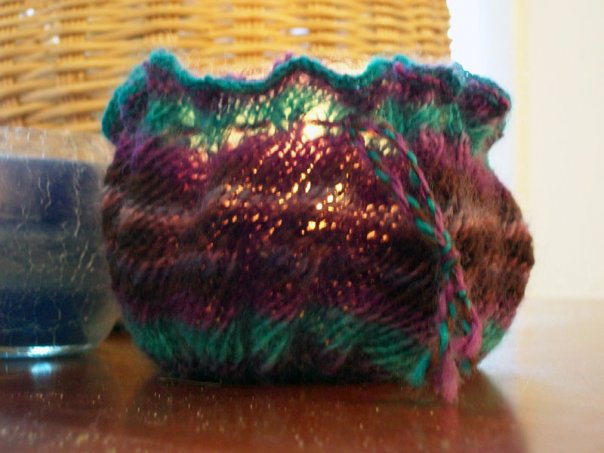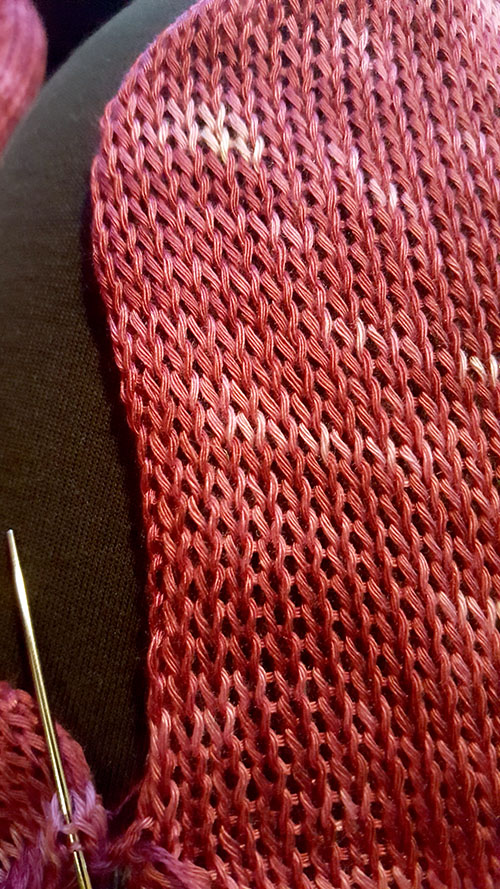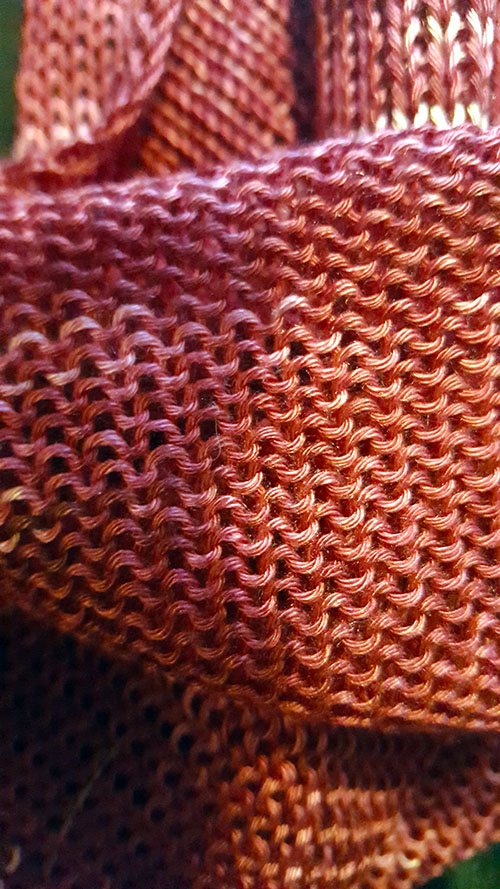There is some question about stockingette stitch knitted fabric and what causes it to curl on the edges. Many of us know that this type of knitted fabric will curl towards the purl side on the side edges and towards the knit side on the cast on and cast off edges. The mechanism that causes this is what is the question.
It has been stated recently on a few online venues that this curl is caused by additional twist being introduced into the yarn when it is wrapped around the knitting needles to create the stitches. This theory is interesting, but doesn't hold up to scrutiny. Here are three reasons why this is not a "twist" issue.
As seen in this picture, when additional twist is added into knitted fabric it creates a biasing effect. The stitches will lean in the direction of the twist and a flat fabric will be come diamond shaped rather than square or rectangular. If twist were the cause, we would see these distortions in the fabric in addition to the curling. Instead, when blocked or steamed, the stockingette fabric retains a square or rectangular shape and the vertical line of stitches remains vertical.

The second reason the twist theory is unlikely is that machine knitting shows the same curling tendencies, but no additional twist is introduced in creating the stitches. Knitting machines use individual hooks and latches. The new yarn is laid across the hook and grabbed by the latch. It is then pulled through the existing loop. It is not wrapped around the needles at any point. (Except during certain types of cast ons) If the twist introduced during the knitting process were the culprit, machine knitting would not curl, or would curl notably less. This is not the case.
Finally, if the curl was caused by twist, it could be mitigated by twist. This means you would be able to neutralize the curl by introducing opposing twist into the yarn before it is knitted. This twist would be removed from the yarn as you knit, counteracting the tendency to curl. I have never been able to overcome stockingette curl by adding or removing twist from the yarn. I have not seen a substantial reduction in the amount of curl even.

It seems to be all about the shape of the stitches and the force that causes. Garter, rib, and moss stitch doesn't so much equalize the twist as equalize the force the stitch is exerting on the ones next to or above and below it.
It seems to be all about the shape of the stitches and the force that causes. Garter, rib, and moss stitch doesn't so much equalize the twist as equalize the force the stitch is exerting on the ones next to or above and below it.

It seems to be all about the shape of the stitches and the force that causes. Garter, rib, and moss stitch doesn't so much equalize the twist as equalize the force the stitch is exerting on the ones next to or above and below it.
- badfaerie's Blog
- Log in or register to post comments